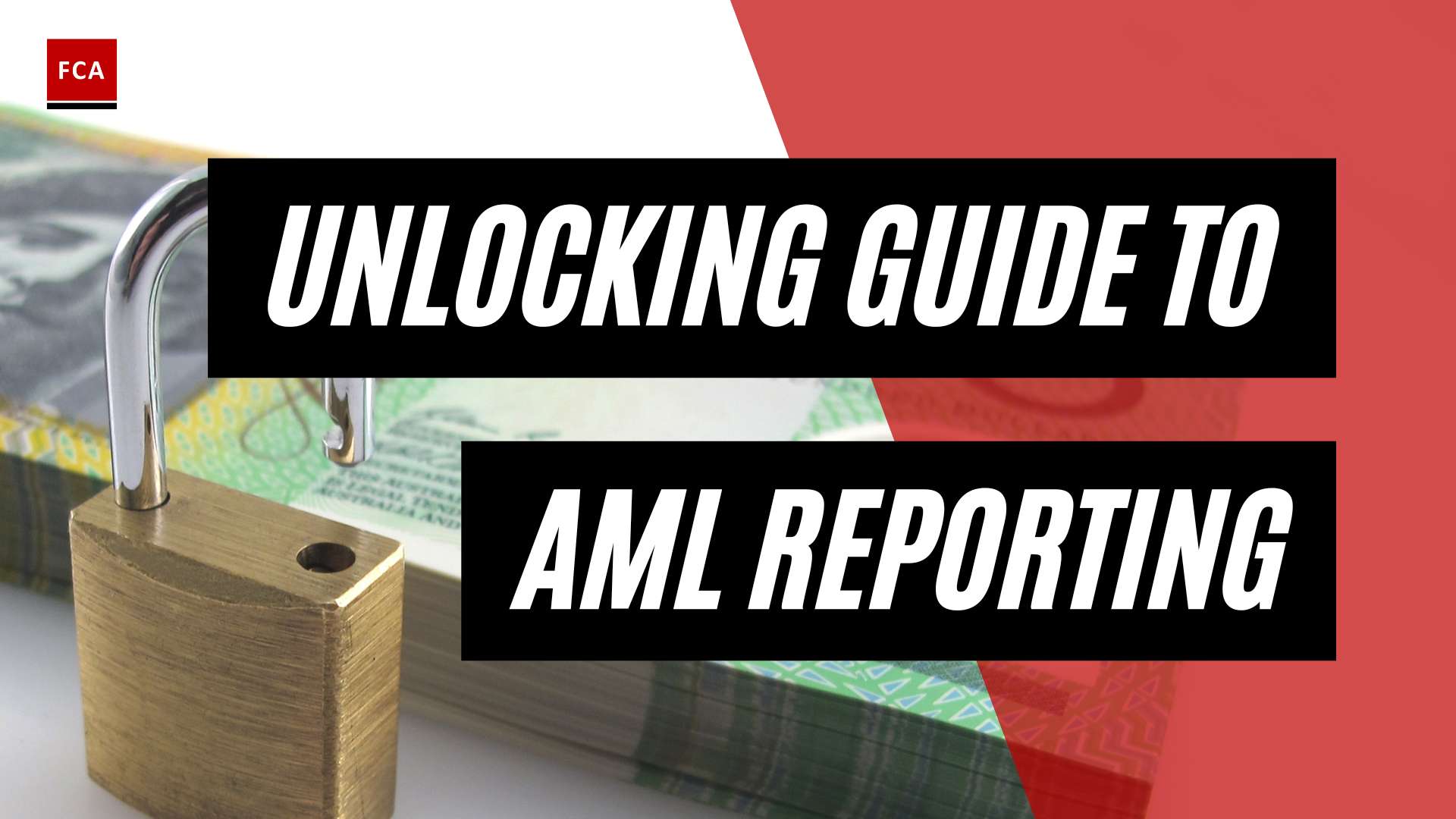Understanding Transaction Monitoring Systems
Transaction monitoring plays a critical role in maintaining the integrity of financial systems and ensuring compliance with regulatory requirements. It is a tool used to detect unusual activities, prevent fraudulent actions, and provide assurance to businesses and customers about the safety of their monetary transactions.
Importance of Transaction Monitoring
The importance of transaction monitoring cannot be overstated. Financial institutions, iGaming companies, and crypto businesses that fall under anti-money laundering (AML) regulations and deal with client transactions rely on transaction monitoring to detect signs of illegal activities, such as money laundering, terrorist financing, and fraud. By identifying and investigating suspicious transactions, businesses can prevent financial losses, protect their reputation, and adhere to compliance obligations (Source).
Role of Transaction Monitoring in Financial Systems
Transaction monitoring plays a crucial role in maintaining the integrity of financial systems. By scanning and analyzing financial data, such as deposits, withdrawals, and the velocity of transactions, transaction monitoring helps spot trends and discrepancies that may indicate financial crime. This enables businesses to take appropriate action and prevent illicit activities from occurring within their systems.
Advantages of Automated Transaction Monitoring
In the past, transaction monitoring was largely a manual process, which was labor-intensive and prone to human error. However, with the advent of advanced technologies, automated transaction monitoring has emerged as a game-changer. By leveraging big data, artificial intelligence (AI), machine learning, and data analytics, automated transaction monitoring solutions can process vast amounts of data in real-time. This enables the detection of complex patterns, trends, and anomalies that may indicate fraudulent or suspicious activities. Automation improves efficiency, accuracy, and speed, reducing the need for manual monitoring and enhancing the overall effectiveness of transaction monitoring efforts (Source).
Compliance and Regulatory Requirements
Compliance with AML regulations and know your customer (KYC) standards is a fundamental requirement for businesses operating in the financial sector. Transaction monitoring plays a crucial role in ensuring compliance by detecting potential instances of money laundering, terrorist financing, and other forms of financial crime. By implementing automated transaction monitoring solutions, businesses can efficiently monitor unusual financial operations, detect fraud, and generate regulatory reporting documents to meet compliance obligations (Source).
Transaction monitoring systems are continuously evolving, driven by advancements in technology and the increasing sophistication of financial crimes. As businesses strive to stay ahead of emerging risks, it is essential to understand the key features, benefits, and components of an ideal transaction monitoring solution. We will explore these aspects further in the subsequent sections of this article.
Key Features of Transaction Monitoring Solutions
Transaction monitoring solutions play a critical role in detecting and preventing financial crimes, ensuring compliance with anti-money laundering (AML) regulations, and safeguarding the integrity of financial systems. These solutions are equipped with key features that enhance their effectiveness and efficiency. Let’s explore some of these key features.
Real-Time Monitoring and Alert Generation
Real-time monitoring is a fundamental feature of transaction monitoring solutions. It enables financial institutions to spot suspicious activities promptly, such as large cash deposits or money transfers, allowing for the detection of financial crimes before they occur or at an early stage (Flagright). By continuously monitoring transactions as they happen, these solutions can identify potential risks and anomalies in real-time, enabling swift action to mitigate potential threats. Real-time monitoring ensures a proactive approach to risk management and compliance.
The real-time monitoring feature of transaction monitoring solutions is complemented by alert generation capabilities. Whenever a potentially suspicious transaction is identified, the system generates an alert to notify compliance and risk management teams. These alerts provide timely information, allowing for immediate investigation and appropriate action to be taken. Effective transaction monitoring solutions implement sophisticated algorithms and customizable rules to minimize false positives while maximizing the detection of suspicious activities.
Machine Learning and Artificial Intelligence Capabilities
Advanced technologies such as machine learning and artificial intelligence (AI) are revolutionizing transaction monitoring. These capabilities enable transaction monitoring solutions to analyze vast amounts of data in real-time, facilitating the detection of complex patterns and trends (Flagright). Machine learning algorithms can adapt and improve over time by learning from historical data and evolving patterns of financial crime. AI capabilities enhance the accuracy and efficiency of the transaction monitoring process, reducing manual effort and the risk of human errors.
By leveraging machine learning and AI, transaction monitoring solutions can enhance the detection of suspicious activities, identify emerging risks, and improve the overall effectiveness of the compliance program. These technologies enable continuous learning and adaptation to evolving threats and regulatory requirements.
Comprehensive Audit Trails and Reporting
To ensure compliance with regulations and facilitate audits, transaction monitoring solutions offer comprehensive audit trails and reporting functionalities. These features enable organizations to track and document all monitoring activities, alerts, and investigations, providing transparency and accountability. Audit trails provide a detailed record of actions taken, facilitating regulatory compliance and internal investigations. Reporting capabilities allow for the generation of comprehensive reports, including transaction histories, suspicious activity reports, and compliance status.
Comprehensive audit trails and reporting functionalities not only assist organizations in meeting regulatory obligations but also enable them to demonstrate their commitment to compliance and risk management to regulators, stakeholders, and clients.
Integration with Other Systems and Tools
To streamline operations and enhance efficiency, transaction monitoring solutions should seamlessly integrate with other systems and tools. Integration with anti-money laundering (AML) solutions, customer relationship management (CRM) systems, and other relevant platforms is crucial for a holistic view of the transactional ecosystem (Shufti Pro). Integrated systems allow for the exchange of information, data sharing, and enhanced collaboration between various departments and stakeholders involved in compliance and risk management.
By integrating with other systems and tools, transaction monitoring solutions can leverage existing data sources, streamline workflows, and facilitate more effective decision-making. This integration enables organizations to optimize their AML and risk management processes, improve operational efficiency, and ensure a comprehensive approach to compliance.
In conclusion, transaction monitoring solutions offer key features that enable organizations to effectively detect and prevent financial crimes, comply with AML regulations, and mitigate risks. Real-time monitoring, machine learning and AI capabilities, comprehensive audit trails and reporting, and integration with other systems and tools are essential components of robust transaction monitoring solutions. By leveraging these features, organizations can strengthen their compliance programs, protect their reputation, and safeguard the integrity of financial systems.
Benefits of Transaction Monitoring Solutions
Implementing robust transaction monitoring solutions offers numerous benefits for financial institutions and organizations in their fight against financial crimes. Let’s explore some of the key advantages these solutions provide.
Fraud Detection and Prevention
Transaction monitoring solutions play a vital role in detecting and preventing fraud within financial institutions. By analyzing customer transactions, these systems can identify anomalies and flag suspicious activities, allowing institutions to take prompt action. Leveraging predefined rules and scenarios, these solutions effectively spot potential fraudulent transactions, safeguarding both the institution and its customers. Through proactive monitoring, financial institutions can mitigate the risks associated with fraudulent activities.
Reduction of Financial Losses and Regulatory Fines
The implementation of transaction monitoring solutions can significantly reduce financial losses resulting from fraud. By promptly identifying and addressing suspicious transactions, organizations can minimize the impact of fraudulent activities on their bottom line. Furthermore, these solutions aid in compliance with anti-money laundering (AML) regulations and Know Your Customer (KYC) requirements, helping institutions avoid hefty regulatory fines and potential damage to their reputation.
Compliance with AML Regulations and KYC Requirements
Transaction monitoring solutions are essential for financial institutions to comply with AML regulations and KYC requirements. These solutions enable institutions to monitor customer transactions, assess risks, and ensure adherence to regulatory obligations imposed by authorities such as FinCEN, FATF, and OFAC. By leveraging automated systems and advanced technologies, transaction monitoring solutions help institutions establish robust compliance frameworks and combat money laundering, terrorist financing, and other financial crimes.
Thorough Monitoring and Risk Mitigation
Transaction monitoring solutions provide comprehensive monitoring capabilities, enabling financial institutions to detect and mitigate various risks. By leveraging big data, artificial intelligence, machine learning, and data analytics, these solutions process vast amounts of data in real-time. This enables them to identify patterns, detect anomalies, and flag potentially fraudulent transactions or activities. With advanced technologies and automated systems, institutions can enhance their risk management processes, minimize manual monitoring efforts, and ensure effective risk mitigation (KYC Hub).
Transaction monitoring solutions not only aid in fraud detection and prevention but also assist organizations in adhering to regulatory requirements, reducing financial losses, and enhancing overall risk management practices. By leveraging these solutions, financial institutions can protect themselves, their customers, and the integrity of the financial system as a whole.
Transaction Monitoring Process
To effectively combat financial crimes and ensure compliance with anti-money laundering (AML) regulations, financial institutions employ transaction monitoring systems. These systems follow a well-defined process that involves data collection, analysis, detection of suspicious activities, alert generation, investigation, and reporting.
Data Collection and Analysis
The first step in the transaction monitoring process is the collection and analysis of data associated with financial transactions. This data includes transactional information such as account details, transaction amounts, dates, and parties involved. By gathering and analyzing this data, financial institutions can establish a baseline for normal customer behavior and transaction patterns.
During the analysis phase, transaction monitoring systems apply predefined rules and algorithms to identify any deviations or anomalies that may indicate suspicious activities. These rules are designed to flag transactions that fall outside of expected patterns, such as large cash deposits or frequent transfers to high-risk jurisdictions.
Detection of Suspicious Activities
Once the data has been analyzed, the transaction monitoring system proceeds to the detection phase. This critical step involves identifying transactions that exhibit characteristics associated with potential financial crimes, such as money laundering, terrorist financing, or fraud. The system compares the analyzed data against predefined suspicious transaction indicators and risk profiles.
The detection algorithms used in transaction monitoring systems are often based on advanced techniques, including machine learning and artificial intelligence. These technologies enable the system to adapt and learn from new patterns and emerging risks, enhancing its ability to detect suspicious activities effectively.
Alert Generation and Investigation
When the transaction monitoring system identifies a transaction or a series of transactions that meet the criteria for suspicion, it generates an alert. These alerts serve as notifications to the compliance team or designated personnel within the financial institution. The alerts provide detailed information about the suspicious activity, including the transaction details and the rule or indicator triggered.
Upon receiving an alert, the compliance team initiates an investigation to determine the legitimacy of the flagged transaction. This investigation may involve gathering additional information, reviewing customer profiles, conducting interviews, or leveraging other internal and external resources. The goal is to determine whether the flagged activity is indeed suspicious and warrants further action.
Reporting and Compliance Obligations
Reporting and compliance obligations are integral components of the transaction monitoring process. Financial institutions are required to document and report any suspicious activities to regulatory authorities as per legal requirements. These reports provide regulators with essential information about potential financial crimes and aid in the fight against money laundering and other illicit activities.
Transaction monitoring systems typically generate comprehensive reports that include details of the suspicious transactions, the investigation findings, and any subsequent actions taken. These reports ensure transparency and compliance with AML regulations, helping financial institutions fulfill their regulatory obligations.
By implementing robust transaction monitoring solutions, financial institutions can effectively monitor and detect suspicious activities, enabling them to take proactive measures to mitigate risks and maintain compliance with AML regulations.
Essential Components of an Ideal Transaction Monitoring Solution
To ensure effective anti-money laundering (AML) compliance and risk management, an ideal transaction monitoring solution should possess several essential components. These components play a crucial role in detecting and preventing suspicious activities, facilitating compliance with regulatory requirements, and safeguarding financial institutions from potential risks.
Customizable Rules for Improved Effectiveness
An essential component of an ideal transaction monitoring solution is the ability to create and customize rules to enhance effectiveness. By tailoring the rules to the specific needs of the organization, false positives and false negatives can be reduced, saving time and resources. Customizable rules allow for greater accuracy in identifying suspicious transactions and minimize the risk of overlooking genuine ones. This customization capability is crucial in adapting the solution to the unique risk profile and regulatory environment of the institution (I-Spiral).
Flexibility and Deployment Options
Flexibility and deployment options are vital factors to consider when selecting a transaction monitoring solution. Organizations should choose a solution that offers various deployment options, including on-premises hosting or cloud-based hosting by the vendor or the organization itself. This flexibility ensures that the organization has control over where their data is hosted, addressing security concerns, and complying with regulatory requirements (I-Spiral).
Unified Platform for Payment Monitoring
A unified platform for payment monitoring is a valuable component of an ideal transaction monitoring solution. It allows organizations to consolidate multiple monitoring applications, such as transaction monitoring, client and transaction screening, client activity reviews, and enhanced risk assessment, into a single, reliable platform. Utilizing a unified platform streamlines processes, reduces costs, and enhances efficiency by eliminating the need for separate vendors and multiple interfaces (I-Spiral).
Data Hosting and Security
Data hosting and security are critical components of an ideal transaction monitoring solution. Organizations must ensure that the solution provides robust data hosting capabilities, including data storage, encryption, and access controls. The solution should comply with industry standards and regulations to safeguard sensitive customer information and maintain data integrity. Choosing a solution with stringent security measures is essential to protect against data breaches and unauthorized access, thereby maintaining the trust of clients and regulatory authorities.
By considering these essential components, organizations can select a transaction monitoring solution that aligns with their specific requirements. This ensures effective AML compliance, risk mitigation, and the ability to adapt to evolving regulatory landscapes. Implementing a comprehensive and robust transaction monitoring solution is fundamental in combating financial crime, reducing regulatory fines, and safeguarding the integrity of financial systems.
Choosing the Right Transaction Monitoring Solution
When selecting a transaction monitoring solution, it’s crucial to consider several key factors to ensure it aligns with your organization’s needs and requirements. Here are some essential aspects to consider:
Scalability and Adaptability
As businesses grow and transaction volumes increase, it’s vital to choose a transaction monitoring solution that can scale and adapt accordingly. The solution should have the capacity to handle large volumes of transactions without compromising on performance or accuracy. Scalability ensures that the system can keep up with the evolving demands of your organization, preventing backlogs and delays in monitoring suspicious activities.
Return on Investment and Long-Term Value
Investing in a transaction monitoring solution is not just about the upfront cost; it’s also about the long-term value it provides. Consider the return on investment (ROI) and the total cost of ownership over time. A solution that offers a comprehensive set of features and functionalities, along with efficient and accurate monitoring capabilities, can deliver significant value by reducing financial losses and regulatory fines.
Leveraging AI and Machine Learning
The power of artificial intelligence (AI) and machine learning (ML) cannot be overlooked in transaction monitoring. These technologies enable the system to adapt and evolve based on patterns, trends, and anomalies in transaction data. By leveraging AI and ML, transaction monitoring solutions can enhance rule-based detection, prioritize alerts, and detect new risks that traditional rule-based systems might miss. According to a State of Financial Crime report, 31% of respondents identified using AI to prioritize alerts as the top way AI could add value to their compliance team.
Enhanced Detection with Advanced Analytics
Transaction monitoring solutions should incorporate advanced analytics capabilities to provide deeper insights and enhance detection accuracy. Features such as identity clustering, natural language processing (NLP), and behavioral analytics can help identify complex patterns and relationships within transaction data. These advanced analytics techniques go beyond traditional rule-based monitoring and can uncover hidden risks and potential money laundering activities.
By considering these factors when choosing a transaction monitoring solution, organizations can ensure they select a solution that is scalable, adaptable, provides a strong ROI, leverages AI and ML capabilities, and incorporates advanced analytics for enhanced detection. Implementing the right solution can significantly contribute to fraud detection and prevention, reduction of financial losses and regulatory fines, and overall compliance with AML regulations and KYC requirements.








